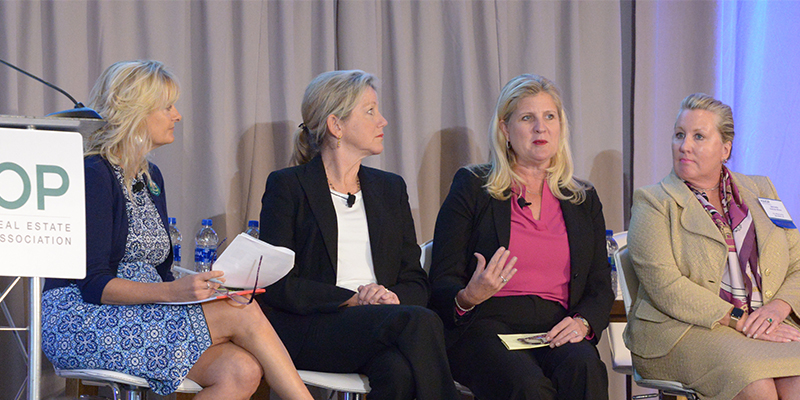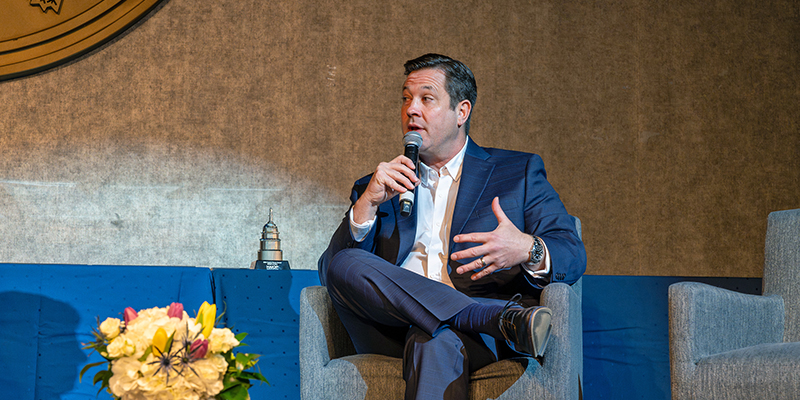At I.CON East 2019, panelists at the “How to Invest in an Ultra-competitive Marketplace” session discussed what’s appealing to institutional investors and the trends they’re seeing in the market today.
Brandi Hanback, executive vice president industrial development and head of FTZ, Trade & Logistics for Rockefeller Group, moderated the panel, with Kathleen Briscoe, partner and chief capital officer, Dermody Properties; Barbara Perrier, vice chairman, CBRE; and Gretchen Wilcox, president and founder, G.S. Wilcox & Co.
One thing the group was unanimous on: The demand for industrial logistics space will continue. Looking at 2019 so far, “We’re pretty much even with volumes compared to last year, but I expect by the end of this year we’ll be slightly up,” said Perrier. Some users have been more effected than others by tariffs and the evolving trade war, she added.
Wilcox was asked to share what she’s seeing in the equity markets. “We’re seeing smaller chunks of equity available, where previously those equity checks were very large. There seems to be more equity available for the middle and smaller markets.”
Hanback asked Perrier about cap rates – have we stabilized? What’s the difference between Class A and Class B properties? “In gateway markets, cap rates are more stable but they’re at 4%. How much lower can they go?”
It depends on the area, she added. “You see the gap narrowing between Class A and Class B properties in core markets. And a lot of product hit the market in September – all of that will be priced over the next few weeks and I’m optimistic we’ll have some lower cap rates.”
Hanback asked Wilcox if she’s seeing certain types of debt structures become more popular lately. “Forward commitments, given the low interest rates,” she said. “Locking in long-term debt with rates where they are. There’s so much money out there. We’re also seeing more lenders getting into new types of lending – bridge loans, mezzanine financing, etc.”
And which property type and deal size is most ideal to lenders? “Industrial is definitely at the top of the food chain,” Wilcox said. “In terms of size, it’s everything from $2 million to $100 million portfolios and up.”
“There have been so many acquisitions in the last 10 years,” she pointed out. “There used to be maybe 75 life companies active in the marketplace, and now there are probably only 40 life companies active in the lending space. So that has created a lot of competition.”
Hanback asked the panelists how developers can make their properties more attractive to investors. “Parking right now is a key thing,” said Perrier. “If there’s a way to look at parking alternatives, that’s something we’re seeing more demand for; amenities, too. Paying attention to area amenities and being supportive in the communities you’re developing in.”
“Increasingly our tenants want amenities nearby,” Briscoe agreed. “They have to work really hard to attract senior talent. The very first thing they do – and we do – is a labor study.”
“When it comes to investing today, it’s important to look at where the labor is,” Perrier added. “Some areas may not be traditionally strong markets, but they have the labor force, young people are moving there, there are good schools – and those factors should be considered. We should be looking to demographics more to find opportunities.”
Looking ahead, the panelists were asked what could change the outlook for industrial. Perrier said her view is that the recent decrease in the interest rate is “sending the signal that we’ve got some running room. I think that’s pushing out the potential recession. We’re thinking 2024 or 2025.”
This post is brought to you by JLL, the Social Media and Conference Blog sponsor of NAIOP’s I.CON East: The Industrial Conference. Learn more about JLL at www.us.jll.com or www.jll.ca.















